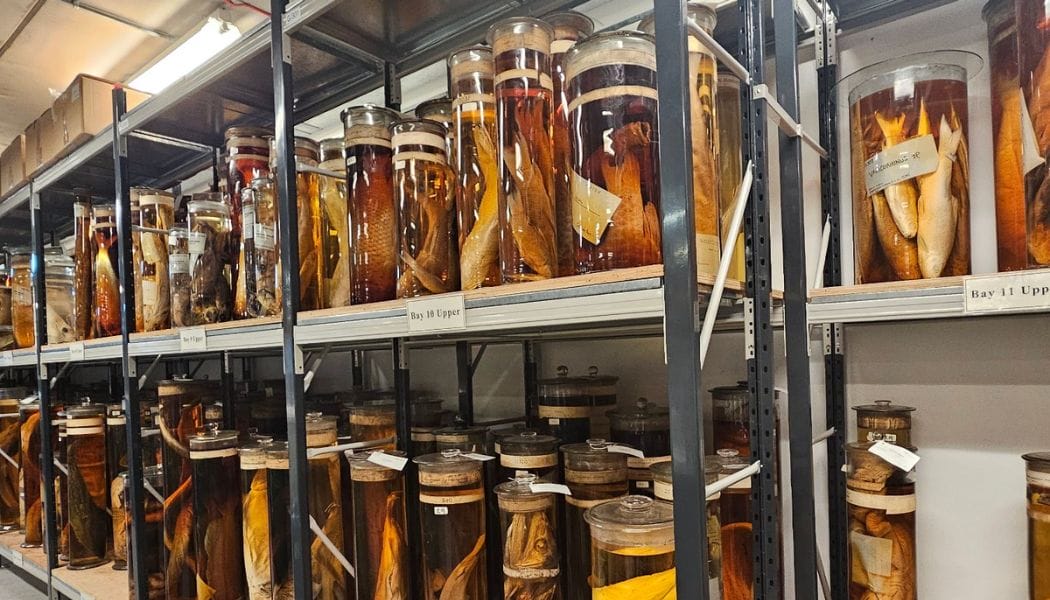The liquid in jars dating back to the Victorian era can be analysed while remaining shut, suggests a new study
Researchers have developed a new approach to identifying the chemical composition of preservation fluids in historic jars without ever opening them.
Research teams from the Science and Technology Facilities Council (STFC), Natural History Museum and Agilent Technologies published their findings in a scientific journal last week.
The proof-of-concept study investigates the feasibility of using a handheld device known as a Spatially Offset Raman Spectroscopy (SORS) to determine the chemical composition of preservation fluids, all the glass of the original container.
It allows fluids, often used in the preservation of animal samples, to be analysed without compromising specimens – some of which date back as far as the Victorian era.
Instead, a chemical analysis is conducted by shining a laser light through a container and inspecting the changes in wavelength that occur when the light is reflected.
Chelsea McKibbin, Senior Conservator at London’s Natural History Museum said: “After many years of seeking an appropriate analytical approach, it is exciting to be part of this enthusiastic project.
“Applying this technique in practice to historic fluid preserved collections where minimal intervention is paramount, will not only be invaluable to collection knowledge, but also inform future care considerations.”





